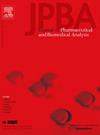2,4-二硝基苯酚中毒及其作为药物摄入指标的形态学发现。
IF 3.1
3区 医学
Q2 CHEMISTRY, ANALYTICAL
Journal of pharmaceutical and biomedical analysis
Pub Date : 2024-10-02
DOI:10.1016/j.jpba.2024.116498
引用次数: 0
摘要
由于中毒不会在死者身上留下任何特征性发现,因此只有在对尸体进行外部检查时才能极少发现致命中毒。本研究回顾了从 20 世纪初至今 2,4-二硝基苯酚(2,4-DNP)在人体中的中毒事件,还报告了罗斯托克(德国)一名 50 岁肥胖男子致命中毒的案例,并介绍了在这些罕见案例中对尸体标本中摄入的物质进行毒理学分析的方法。通过有选择性的文献检索,收集了有关摄入/中毒 2,4-DNP病例中外部和/或内部异常病理形态发生和定位的信息。到 2021 年,共找到 13 份关于摄入/中毒 2,4-DNP 导致形态学结果的病例报告。外部检查结果主要是皮肤发黄,其次是外伤/疹子和巩膜发黄。内部检查结果包括内脏器官发黄、胃内容物呈黄色、粘膜发黄和尿液呈浓黄色。并非每次 2,4-DNP 中毒都会出现皮肤、巩膜、粘膜、内脏、汗液变黄和/或尿液呈浓黄色的情况。但是,一旦出现这种情况,就表明摄入了 2,4-DNP,如果局部皮肤出现这种情况,则表明摄入时间过长。2016 年罗斯托克发生的一起因减肥而长期摄入 2,4-DNP 导致死亡的病例就是一例。简单、快速且经济高效的尸检毒理学工作结合 HPLC-DAD 最终可提供可靠的分析结果。本文章由计算机程序翻译,如有差异,请以英文原文为准。
2,4-dinitrophenol intoxication and its morphological findings as an indication of substance intake
Lethal intoxications can only very rarely be recognized during an external examination of corpses, as poisoning does not leave any characteristic findings on the deceased. The present study is a retrospective review on 2,4-dinitrophenol (2,4-DNP) intoxications in human subjects from the beginning of the 20th century until today, as well as a case report on a fatal intoxication of a 50-year old obese man in Rostock (Germany) and an introduction for toxicological analysis in post-mortem specimens of the substance ingested in these rare cases.
Via selective literature search, the information on occurrence and localization of abnormal pathomorphological external and/or internal findings in cases of 2,4-DNP ingestion/ intoxication was gathered. By 2021, a total of 13 case reports with information on morphological findings due to 2,4-DNP ingestion/intoxication were found. The external findings were dominated by yellowing of the skin, followed by exanthemas/rashes and yellowing of the sclera. The internal findings included yellowing of the internal organs, yellow color of the stomach contents, yellowing of the mucous membranes and an intense yellow color of the urine. Yellowish discoloration of the skin, sclera, mucous membranes, internal organs, sweat and/or an intensive yellow discoloration of the urine are not observed in every 2,4-DNP intoxication. However, when they do occur, they are a characteristic indication of 2,4-DNP ingestion and, if localized to the skin, indicate prolonged consumption. A fatal case from Rostock in 2016 due to prolonged intake of 2,4-DNP for weight loss is exemplified. A simple, fast and cost-effective workup combined with HPLC-DAD for post-mortem toxicology ultimately delivers reliable analysis results.
求助全文
通过发布文献求助,成功后即可免费获取论文全文。
去求助
来源期刊
CiteScore
6.70
自引率
5.90%
发文量
588
审稿时长
37 days
期刊介绍:
This journal is an international medium directed towards the needs of academic, clinical, government and industrial analysis by publishing original research reports and critical reviews on pharmaceutical and biomedical analysis. It covers the interdisciplinary aspects of analysis in the pharmaceutical, biomedical and clinical sciences, including developments in analytical methodology, instrumentation, computation and interpretation. Submissions on novel applications focusing on drug purity and stability studies, pharmacokinetics, therapeutic monitoring, metabolic profiling; drug-related aspects of analytical biochemistry and forensic toxicology; quality assurance in the pharmaceutical industry are also welcome.
Studies from areas of well established and poorly selective methods, such as UV-VIS spectrophotometry (including derivative and multi-wavelength measurements), basic electroanalytical (potentiometric, polarographic and voltammetric) methods, fluorimetry, flow-injection analysis, etc. are accepted for publication in exceptional cases only, if a unique and substantial advantage over presently known systems is demonstrated. The same applies to the assay of simple drug formulations by any kind of methods and the determination of drugs in biological samples based merely on spiked samples. Drug purity/stability studies should contain information on the structure elucidation of the impurities/degradants.

 求助内容:
求助内容: 应助结果提醒方式:
应助结果提醒方式:


